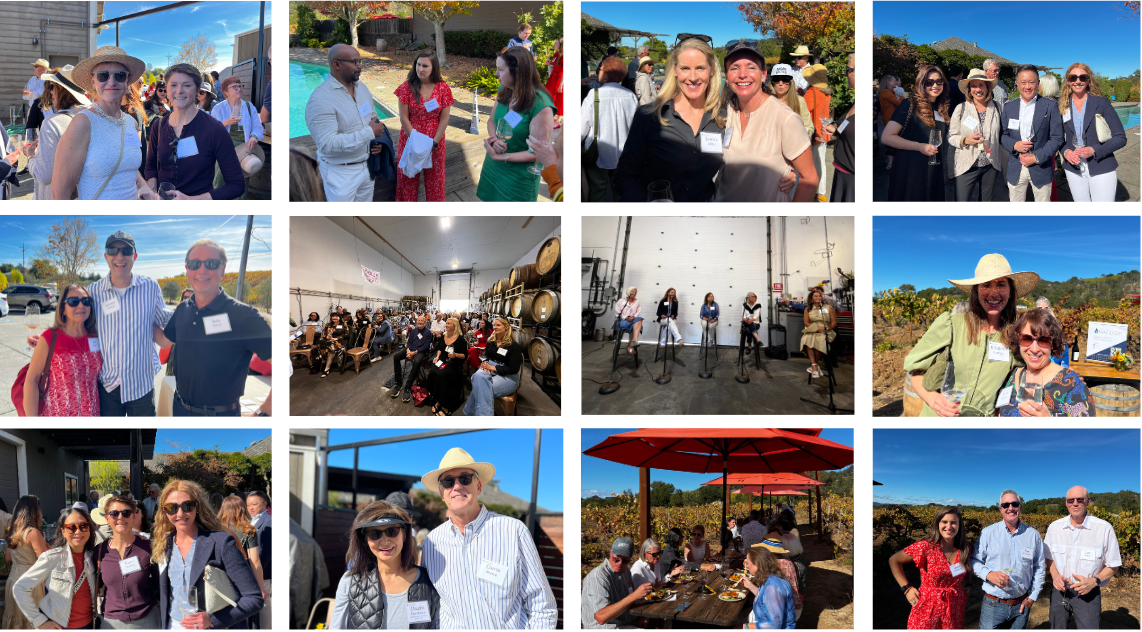
Fall Harvest Lunch: Embracing Disruptive Trends in Sustainability in 2025
Archive

NACD Northern California
Contact Us
Lisa Spivey,
Executive Director
Kate Azima,
Director of Partnerships & Marketing
programs@northerncalifornia.nacdonline.org
Find a Chapter
About The Event
Amid the breathtaking backdrop of Limerick Lane Cellars winery in Healdsburg, the stage was set to discuss sustainability and how California's boardrooms can continue to spearhead the charge toward a more sustainable future.
Thank you to our wonderful rockstar female panel, Anna Walker, Lisa Grow, Karen Francis DeGolia, and Samantha Crispin, as well as to our brilliant moderator Catherine Zinn for sharing such great insights, some of which you can find below.
Key Takeaways
Time Horizons
Understanding Investor Composition: Boards must thoroughly analyze their investor and shareholder base, distinguishing between long-hold investors (typically large institutional investors) and short-hold investors (typically hedge funds and retail investors), and assess their differing needs. Discuss which time horizons are most conducive to achieving sustainability goals and prioritize the necessary actions accordingly. You may need to act in several phases of implementation to keep everyone satisfied.
- Who comprises our cap table, and what are their priorities regarding sustainability?
- What time horizons are we looking at for our sustainability goals to be achieved?
Storytelling to the Market
Setting Expectations: Ask yourself if the business has effectively communicated its sustainability expectations to the market? It’s essential to showcase the basis for the assumptions and demonstrate their reasonableness. Consider the potential for short-term stock price volatility due to sustainability initiatives. Prepare to manage investor expectations about the impacts of these actions and when you may need to reconsider certain assumptions.
- How are we conveying our sustainability goals to investors and stakeholders?
AI and Electricity
Understanding Future Consumption: With AI's current electricity consumption at about 2%, projections indicate this could rise to 20% within the next decade. Boards need to address the anticipated strain on utilities and the consequent increase in electricity costs, discussing these factors in the context of long-term business strategies with the board.
- How will the AI impact our business and if electricity costs increase, how will we manage this?
Employees as Key Stakeholders
Employee Satisfaction and Sustainability: Recognize the importance of understanding employee needs, particularly as sustainability becomes increasingly significant to the younger generation of your workforce. Talent retention and strong employee relations are essential for overall business success, so using this as a reason to get investors on board with your sustainability goals can be effective. Developing strategies to incorporate sustainability objectives into every employee's work goals can be a great kick-starter for change from every level of the organization.
- How does our employee base prioritize sustainability, and what can we do as an organization to make small changes that will make an impact on our sustainability goals?
Industry Engagement
Collaborative Change: Explore partnerships with other industry leaders to drive positive change in the supply chain. For example, collaborate with businesses sharing manufacturing facilities to collectively advocate for environmental improvements. Establish methods for holding partners accountable for sustainability commitments as a unified group.
- What conditions must be met to accelerate our sustainability initiatives and enhance input at the organizational level and supply chain level?
Climate Transition Action Plan
Proactive Planning: Instead of relying solely on traditional sustainability reports that often reflect past performance, develop a forward-looking climate transition action plan. Make sure your management team clearly outline sustainability goals, the actions required to achieve them, and the metrics for tracking progress.
- How much will achieving these sustainability goals cost annually, and where will the necessary capital come from?
- What initiatives may need to be deprioritized to facilitate these efforts?
Assumptions
Challenging Management Assumptions: As board directors, it’s vital to scrutinize the assumptions underpinning management’s sustainability goals. Ensure these assumptions are reasonable, reliable, and based on sound data. Establish a process for regularly revisiting these assumptions to adapt to new information or changes in the business environment.
- What assumptions inform our sustainability goals? Are these reasonable, and how will we address any shifts in these assumptions over time?
Event Speakers


Thank you to our generous sponosr for hosting this event:
NACD Northern California
Contact Us
Lisa Spivey,
Executive Director
Kate Azima,
Director of Partnerships & Marketing
programs@northerncalifornia.nacdonline.org
Find a Chapter




